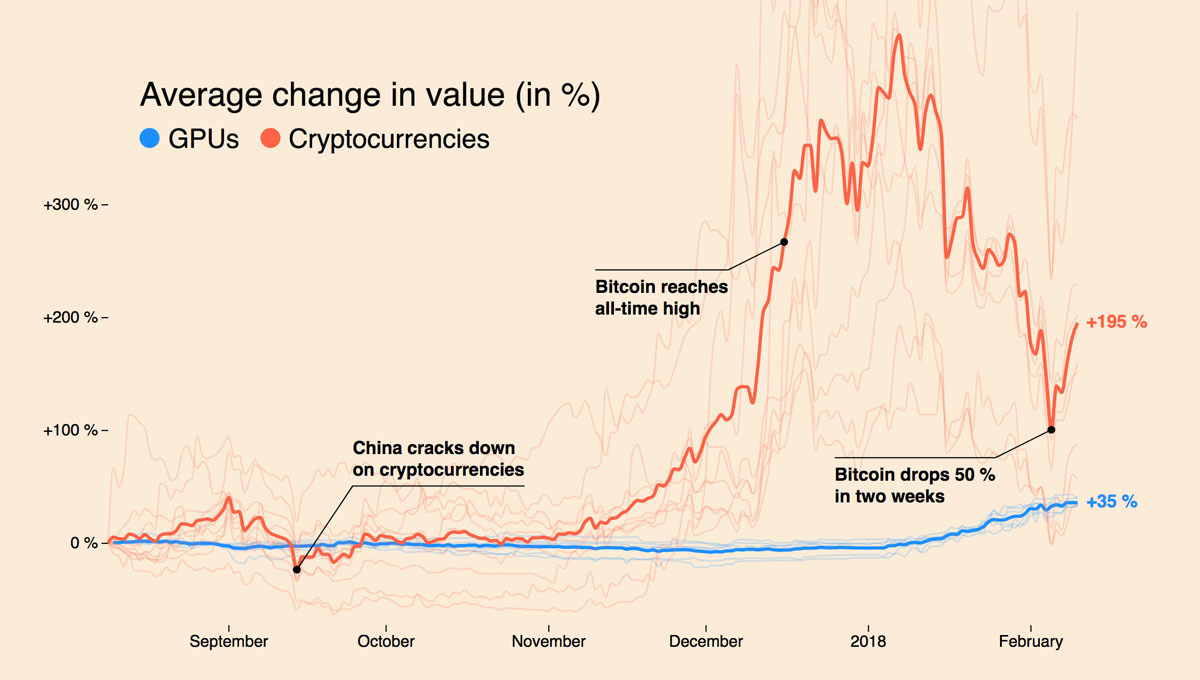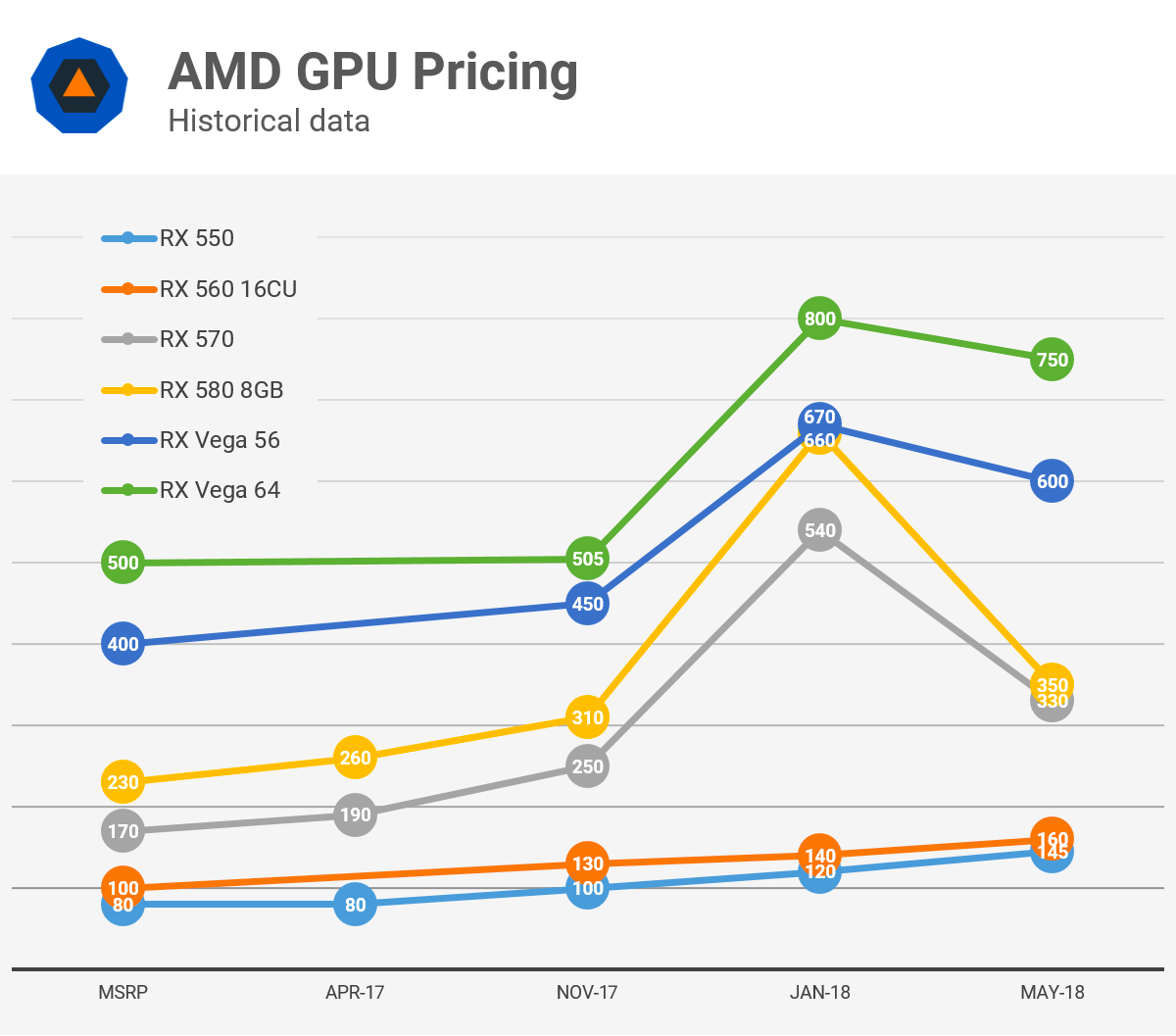Are High GPU Prices Here To Stay? A Market Analysis

Table of Contents
The Impact of Cryptocurrency Mining on GPU Prices
The Crypto Boom and Bust
The cryptocurrency boom, particularly the rise of Ethereum mining, played a significant role in driving up GPU demand and, consequently, high GPU prices. GPUs, with their powerful parallel processing capabilities, are exceptionally well-suited for mining cryptocurrencies like Ethereum. This created a surge in demand, outstripping supply and pushing prices to unprecedented levels.
- Mechanics of GPU Mining: Cryptocurrency mining involves using powerful computing hardware to solve complex mathematical problems, earning miners cryptocurrency as a reward. GPUs' parallel processing architecture makes them highly efficient at this task.
- Ethereum's Merge and its Impact: Ethereum's transition from a proof-of-work to a proof-of-stake consensus mechanism significantly reduced the demand for GPUs used in mining. This "merge" marked a turning point, releasing a large number of previously mining-dedicated GPUs back into the market.
- Long-Term Effects: While the immediate impact of the Ethereum merge was a decrease in GPU prices, the long-term effects on the GPU market are still unfolding. The potential for future cryptocurrencies to utilize GPU mining remains, suggesting that this factor could influence GPU prices in the future, albeit likely to a lesser extent than during the peak of the crypto boom.
Global Chip Shortage and Supply Chain Disruptions
Manufacturing Bottlenecks
The ongoing global chip shortage has had a profound impact on the production and availability of GPUs, contributing to high GPU prices. This shortage is a complex issue with multiple contributing factors.
- Geopolitical Instability and Trade Wars: International tensions and trade disputes have disrupted supply chains, limiting the access to essential materials and components needed for GPU manufacturing.
- Factory Closures and Logistical Challenges: Factory closures due to the pandemic and subsequent logistical bottlenecks, including shipping delays and port congestion, have hampered the timely production and delivery of GPUs.
- Increased Demand from AI and Machine Learning: The rapid growth of the AI and machine learning sector has significantly increased the demand for high-performance GPUs, further exacerbating the existing supply constraints.
Increased Demand for High-Performance GPUs
Gaming, AI, and Professional Applications
The demand for high-performance GPUs is not solely driven by cryptocurrency mining. Several other factors contribute to the sustained high demand and, subsequently, high GPU prices.
- Modern Video Game Complexity: Modern video games are increasingly demanding, requiring powerful GPUs to deliver high resolutions, smooth frame rates, and realistic graphics. This drives consumers to seek out the latest and most powerful graphics cards.
- AI and Machine Learning Boom: The explosive growth of the AI and machine learning market relies heavily on GPUs for processing vast datasets and training complex algorithms. Data centers and research institutions are significant consumers of high-performance GPUs.
- Professional Applications: GPUs are also crucial in professional fields, including scientific computing, data visualization, and simulations. The demand from these sectors further contributes to the overall high demand for GPUs.
Pricing Strategies of GPU Manufacturers
Profit Margins and Market Competition
The pricing strategies employed by major GPU manufacturers, such as NVIDIA and AMD, also play a role in determining the cost of GPUs.
- Market Competition: While competition exists between manufacturers, it doesn't always translate into drastically lower prices. Innovation and technological advancements often justify higher prices for premium GPUs.
- Technological Advancements and New Product Launches: The release of new GPU generations with significant performance improvements often comes with a higher price tag. This is a common strategy in the tech industry.
- Brand Recognition and Market Positioning: Strong brand recognition and market positioning allow manufacturers to command premium prices for their products.
Conclusion
In summary, high GPU prices are a result of a confluence of factors: the lingering effects of cryptocurrency mining (though reduced significantly), persistent global chip shortages and supply chain disruptions, consistently high demand driven by gaming, AI, and professional applications, and the pricing strategies of GPU manufacturers. While the immediate impact of the Ethereum merge eased some pressure, the overall market dynamics suggest that high GPU prices are likely to persist in the near term. While a complete stabilization may take time, a gradual easing is possible as supply chains improve and the market finds a new equilibrium.
Stay tuned for future updates as we continue to track the dynamic GPU market and offer insights into whether these high GPU prices are truly here to stay. Keep checking back for the latest analysis on graphics card prices!

Featured Posts
-
 Gpu Market Update Understanding The Price Surge
Apr 28, 2025
Gpu Market Update Understanding The Price Surge
Apr 28, 2025 -
 Los Angeles Wildfires The Dark Side Of Disaster Speculation
Apr 28, 2025
Los Angeles Wildfires The Dark Side Of Disaster Speculation
Apr 28, 2025 -
 Yankees Suffer Setback Devin Williams Implosion Leads To Loss Against Blue Jays
Apr 28, 2025
Yankees Suffer Setback Devin Williams Implosion Leads To Loss Against Blue Jays
Apr 28, 2025 -
 Is A Bank Of Canada Rate Cut Imminent Analysis Of Grim Retail Sales Data
Apr 28, 2025
Is A Bank Of Canada Rate Cut Imminent Analysis Of Grim Retail Sales Data
Apr 28, 2025 -
 At And T Exposes Extreme Price Increases In Broadcoms V Mware Deal
Apr 28, 2025
At And T Exposes Extreme Price Increases In Broadcoms V Mware Deal
Apr 28, 2025
Latest Posts
-
 Yankees Suffer Setback Devin Williams Implosion Leads To Loss Against Blue Jays
Apr 28, 2025
Yankees Suffer Setback Devin Williams Implosion Leads To Loss Against Blue Jays
Apr 28, 2025 -
 Yankees Loss To Blue Jays Devin Williams Another Collapse
Apr 28, 2025
Yankees Loss To Blue Jays Devin Williams Another Collapse
Apr 28, 2025 -
 Devin Williams Implosion Dooms Yankees In Loss To Blue Jays
Apr 28, 2025
Devin Williams Implosion Dooms Yankees In Loss To Blue Jays
Apr 28, 2025 -
 Yankees Stave Off Sweep Rodons Pitching Early Offense Key To Victory
Apr 28, 2025
Yankees Stave Off Sweep Rodons Pitching Early Offense Key To Victory
Apr 28, 2025 -
 Rodons Strong Performance Yankees Offense Secure Win Against Astros
Apr 28, 2025
Rodons Strong Performance Yankees Offense Secure Win Against Astros
Apr 28, 2025
